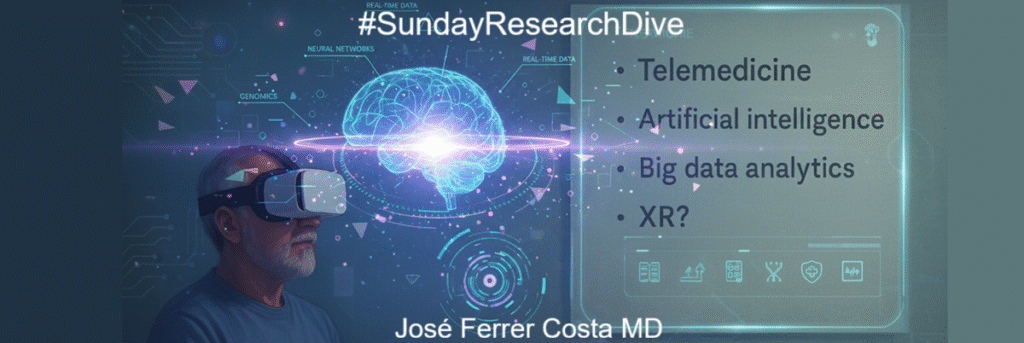
This week I want to step aside from the usual research summary to share a small paradox I found while reviewing WHO documents for my PhD work on XR adoption in healthcare. It says a lot about how immersive technologies are perceived today.
The paradox in WHO strategies
The WHO Guideline: Recommendations on Digital Interventions for Health System Strengthening (2019) is a detailed, evidence-based document. It focuses on tools that had reached enough maturity at the time, such as telemedicine, SMS reminders, digital tracking, and mLearning. Extended Reality, Virtual Reality, or immersive technologies are not mentioned anywhere.
Document link: https://apps.who.int/iris/handle/10665/311941
Two years later, the Global Strategy on Digital Health 2020–2025 set out WHO’s vision for digital transformation. It explicitly mentions “cutting-edge” tools like artificial intelligence, big data, and blockchain. XR is missing again. The only trace is visual: a photograph of a person using a VR headset and haptic gloves, shown as a symbol of innovation.
Document link: https://apps.who.int/iris/handle/10665/344249
That contrast is hard to miss. XR was visible enough to illustrate a flagship document and advanced enough for WHO to use in its own programs, yet it was left out of the strategic objectives. This omission does not point to a lack of evidence, but to a limited understanding of what XR actually represents as a technological field. It suggests that, within policy language, immersive tools are still viewed as generic digital devices rather than a category with specific design, safety, and evaluation challenges.
Where WHO does use XR
Looking beyond those documents, XR has been integrated into several WHO initiatives:
– VR training for ship sanitation inspection (WHO/Europe, 2024), a program combining simulations, didactic modules, and ship visits to train inspectors
– IARC VRtuose Project. The International Agency for Research on Cancer (a WHO body) is piloting VR distraction during chemotherapy to improve patients’ quality of life.
– WHO Academy, where the Director-General announced that global workforce training will include “virtual reality tools for an immersive experience”.
– Digital education for health workers, where WHO publications include VR, serious gaming, and gamification among digital learning methods
– Healthy Metaverse (WHO/Europe, 2022), a communication exploring the public health implications of immersive online environments. It acknowledges both the risks and opportunities of these emerging spaces, highlighting the need for responsible design and evidence-based guidance.
What this tells us
Seen together, these examples show a clear imbalance. XR is already used by WHO in structured ways, from workforce training to patient care, yet it still does not appear in the organization’s main digital health frameworks. The gap is no longer about evidence or pilot maturity. It lies in recognition.
Despite growing use across healthcare, XR remains treated as a visual symbol rather than a defined technological domain. This lack of explicit acknowledgment reflects a limited awareness of its specificity, the kind that is necessary to ensure consistent evaluation methods, safety standards, and integration pathways.
For those of us working in this space, that gap matters. Without formal acknowledgment of XR’s specificities, even validated interventions risk remaining fragmented across projects instead of forming part of coordinated digital health strategies. Evidence is accumulating, implementation is advancing, but institutional understanding and policy adaptation are still catching up.
That is the paradox: XR is no longer an emerging curiosity. It is becoming part of routine healthcare practice, yet remains absent from the language of global digital health strategy.
This article was originally published on vrforhealth
